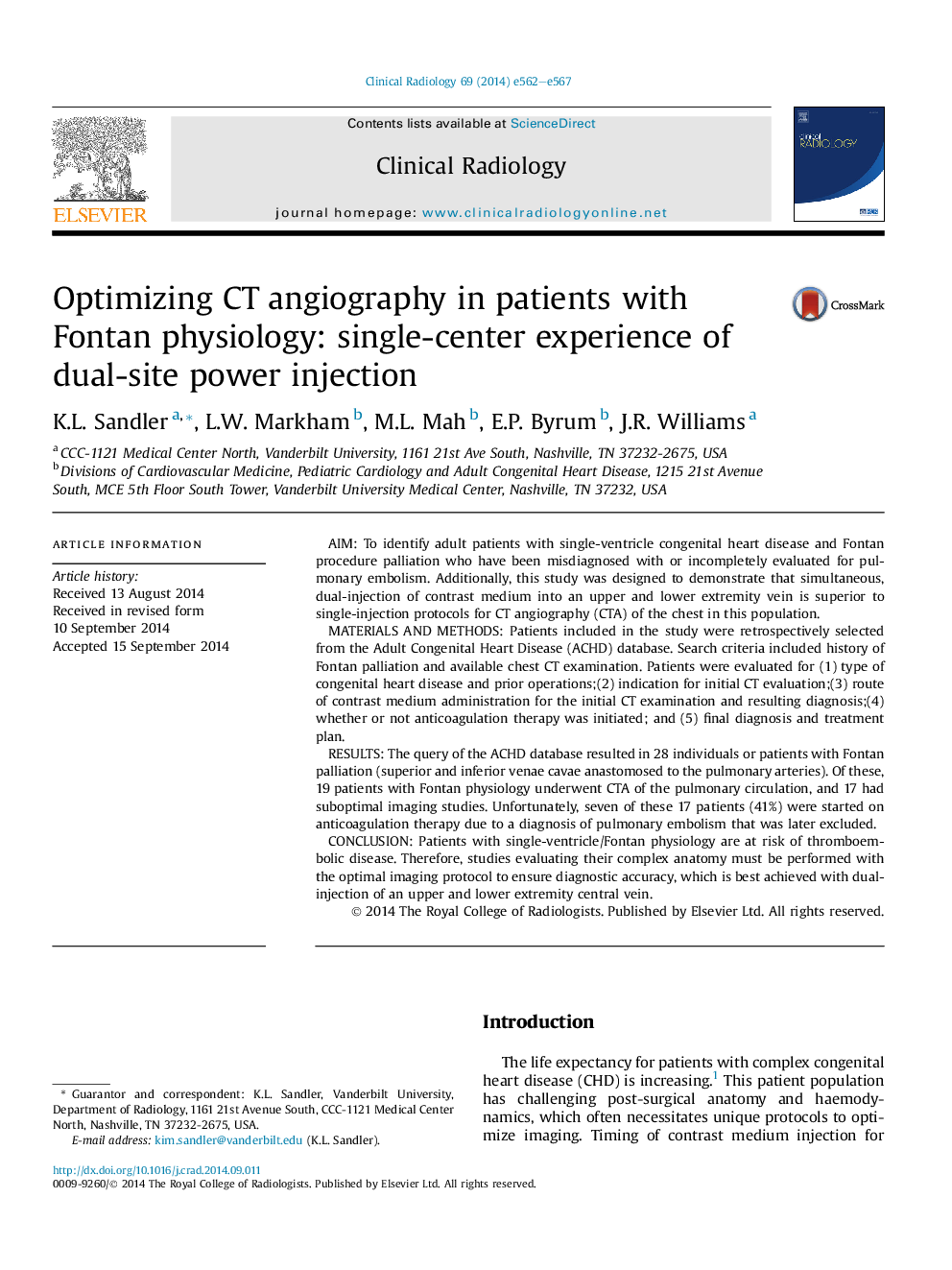| Article ID | Journal | Published Year | Pages | File Type |
|---|---|---|---|---|
| 3981670 | Clinical Radiology | 2014 | 6 Pages |
•The adult congenital heart disease population is growing.•Many of these patients have single ventricle/Fontan physiology.•Patients with Fontan physiology are at increased risk for thromboembolic disease.•Routine CT angiography of the chest in Fontan patients produces suboptimal imaging.•Dual injection protocol CTA will prevent the misdiagnosis of PE in Fontan patients.
AimTo identify adult patients with single-ventricle congenital heart disease and Fontan procedure palliation who have been misdiagnosed with or incompletely evaluated for pulmonary embolism. Additionally, this study was designed to demonstrate that simultaneous, dual-injection of contrast medium into an upper and lower extremity vein is superior to single-injection protocols for CT angiography (CTA) of the chest in this population.Materials and methodsPatients included in the study were retrospectively selected from the Adult Congenital Heart Disease (ACHD) database. Search criteria included history of Fontan palliation and available chest CT examination. Patients were evaluated for (1) type of congenital heart disease and prior operations;(2) indication for initial CT evaluation;(3) route of contrast medium administration for the initial CT examination and resulting diagnosis;(4) whether or not anticoagulation therapy was initiated; and (5) final diagnosis and treatment plan.ResultsThe query of the ACHD database resulted in 28 individuals or patients with Fontan palliation (superior and inferior venae cavae anastomosed to the pulmonary arteries). Of these, 19 patients with Fontan physiology underwent CTA of the pulmonary circulation, and 17 had suboptimal imaging studies. Unfortunately, seven of these 17 patients (41%) were started on anticoagulation therapy due to a diagnosis of pulmonary embolism that was later excluded.ConclusionPatients with single-ventricle/Fontan physiology are at risk of thromboembolic disease. Therefore, studies evaluating their complex anatomy must be performed with the optimal imaging protocol to ensure diagnostic accuracy, which is best achieved with dual-injection of an upper and lower extremity central vein.
